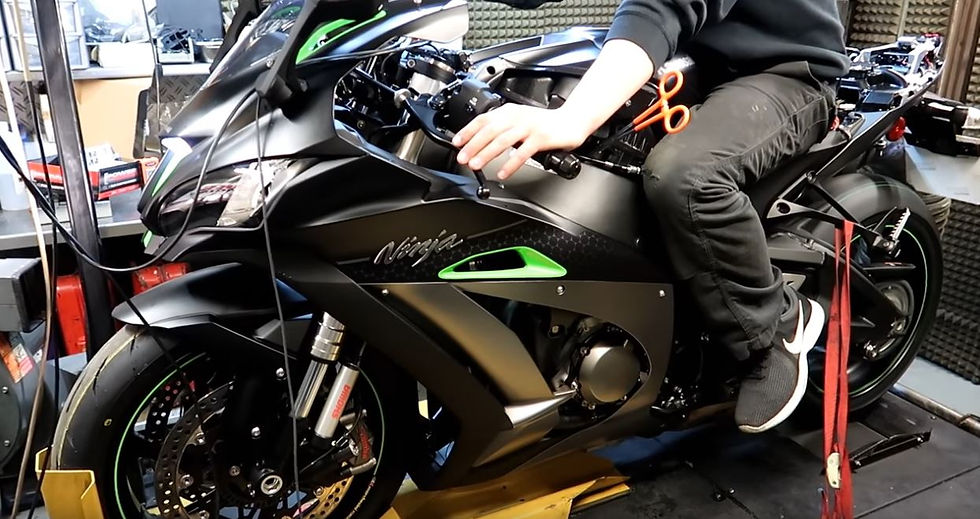
AFTERMARKET PRODUCTS ON YOUR MOTORCYCLE
THAT CAN BOOST ITS PERFORMANCE
July 20, 2020
Aftermarket products can make your ride more comfortable and give a desirable performance output, but can also affect your warranty – It is HIGHLY advisable to refer to your owner’s manual or a certified mechanic if and when would like to install a product on your motorcycle Aftermarket parts for your motorcycle or ATV give you the power and freedom to create a bike that is truly yours, these parts allow you to customize your machine to your heart's content – because your dream bike isn't a brand.
WHAT ARE THEY?
Aftermarket parts are divided into two categories: replacement parts and accessories. Replacement parts are automotive parts built or re manufactured to replace OE parts as they become worn or damaged. Accessories are parts made for comfort, convenience, performance, safety, or customization, and are designed for add-on after the original sale of the motor vehicle.
The aftermarket encompasses parts for replacement, collision, appearance, and performance. The aftermarket provides a wide variety of parts of varying qualities and prices for nearly all vehicle makes and models.
Exhausts (full system, slip on, racing line)
Drive (chain and sprocket kits)
Fuel and air (Air filters, oil filters, cleaner kits)
Engine parts and accessories (camshafts, clutch kits , cylinder heads)
Brakes (accessories, fluid, levers)
Lights and electrical (accent lighting, bulbs)
Crash protection (Bar end sliders, Axle sliders, crash bars)
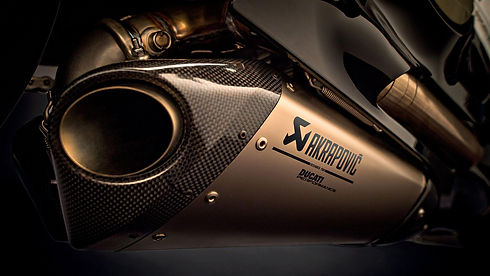
An exhaust system is usually piping used to guide reaction exhaust gases away from a controlled combustion inside an engine or stove. The entire system conveys burnt gases from the engine and includes one or more exhaust pipes. Depending on the overall system design, the exhaust gas may flow through one or more of:
Cylinder head and exhaust manifold
A turbocharger to increase engine power.
A catalytic converter to reduce air pollution.
A muffler to reduce noise.
Aftermarket exhaust parts can increase peak power by reducing the back pressure of the exhaust system. These parts can sometimes can void factory warranties, n most motorcycles all or most of the exhaust system is visible and may be chrome plated as a display feature. Aftermarket exhausts may be made from steel, aluminum, titanium, or carbon fiber.
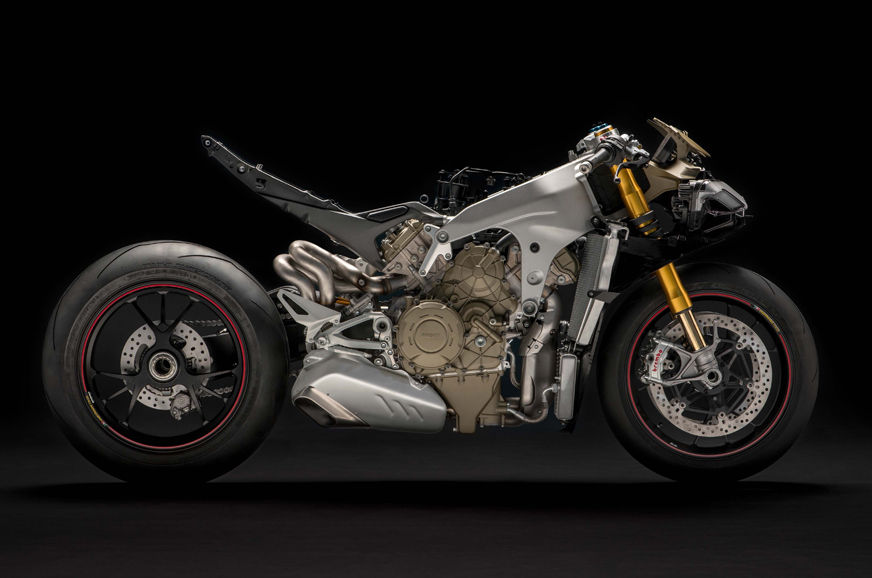
EXHAUSTS IN TODAY'S' AGE
Motorcycle exhausts come in many varieties depending on the type of engine and its intended use.
4 cylinder machines, super-sport bikes like Kawasaki's ZX series, Honda's CBR series, Yamaha's YZF series, latterly titled R6 and R1, and Suzuki's GSX-R, often have a twin exhaust system.
A "full system" may be bought as an aftermarket accessory, also called a 4-2-1 or 4-1, depending on its layout. In the past, these bikes would come as standard with a single exhaust muffler, when EU noise and pollution regulations mostly stopped this practice.
Many automotive companies offer aftermarket exhaust system upgrades as a subcategory of engine tuning. This is often fairly expensive as it usually includes replacing the entire exhaust manifold or other large components, these upgrades however can significantly improve engine performance.
AFTER EFFECTS OF AFTERMARKET EXHAUSTS
Exhaust Consequences
Exhaust systems make power by getting used gases out of the engine, which makes room for more air and fuel in the cylinder. More air going in means more fuel burned, which means more horsepower.
Because the computer has no idea how much air is going through the motor, increasing airflow through the engine can only cause it to run lean. Not only will running lean cost you horsepower, it may very well destroy the engine. The best-case scenario is that fuel fails to completely burn in the cylinder, igniting in the exhaust tube when the throttle closes during shifting and deceleration. The resulting lean backfire causes a rifle shot report to issue from the pipes, potentially damaging the muffler and notifying everyone for a half mile that you didn't bother to reprogram your computer. The worst-case scenario is total engine meltdown when excessive temperatures in the cylinder overwhelm your bike's cooling system.
Motorcycle Fuel Injection
Your average fuel-injected automobile has three or more airflow and air-quality monitoring devices in the intake: a mass-airflow sensor, manifold absolute pressure sensor, intake air temperature sensor and barometric pressure sensor among them. An oxygen sensor monitors oxygen content of the gas coming out. Fuel-injected bikes often do without some or even all of these sensors, relying solely upon a preprogrammed fuel and spark map calibrated to the engine's stock airflow parameters. In cases like this, the computer is almost flying blind, using little more than rpm and crankshaft position to modulate fuel injection
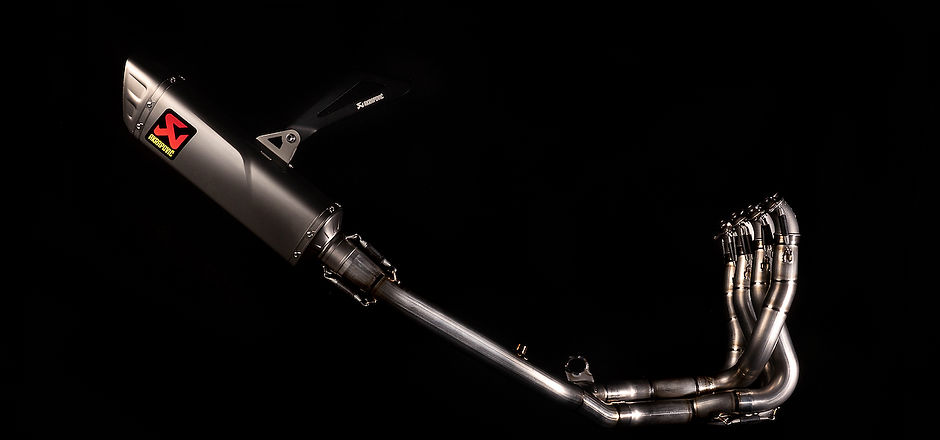
AFTERMARKET AND OEM (ORIGINAL EQUIPMENT MANUFACTURER) AIR FILTER
Aftermarket air filters were not originally held in such high regard. Their low price point perpetuated the idea that they weren’t in equal standing with an OEM air filter. The increased manufacture of aftermarket air filters caused producers to improve quality and lower prices in order to gain a competitive advantage.
The most important part of the air filter is the filter media. This is what traps dust and dirt from the air that flows into the engine to facilitate the combustion process.
Without it, dirt and road debris would get sucked into the engine causing irreparable damage to various components. It is, therefore, essential for your filter media to maintain its integrity throughout its duration of use.
Due to the extreme temperatures that exist under the hood, manufacturers ensure that their engine air filters have a heat resistant feature.
OEM engine air filters, usually boast a large surface area and are therefore considered superior to aftermarket products since they will be able to trap more dirt for longer and are undoubtedly of high quality. They are specifically designed to meet the needs of a particular motorcycle model, and that is one reason why they last longer than any aftermarket engine air filter.
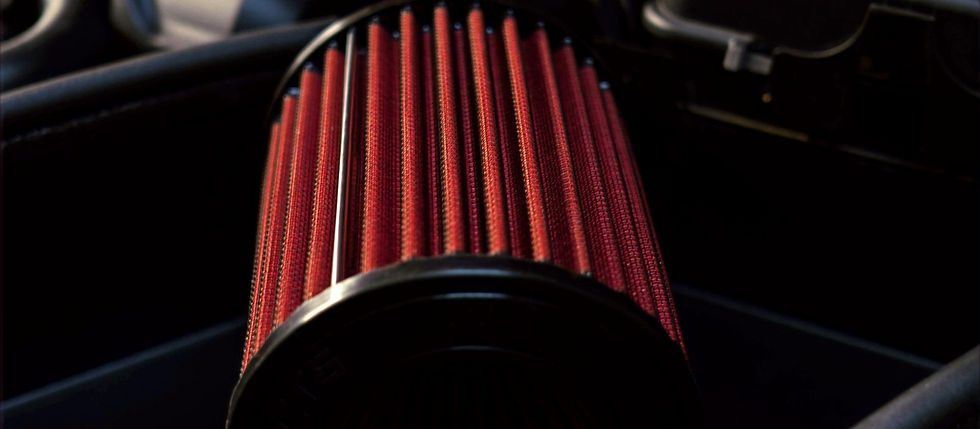
Pro's and Con's when opting for OEM air filters
Pros
Fits your engine perfectly
Filter media has a large surface area
Uses high-quality filter material
High filtration efficiency
Cons
They are more expensive than aftermarket engine air filters
Compatible with specific vehicle models
FINAL CHAIN DRIVE EXPLAINED
The motorcycle’s drive system transfers power generated from the engine crank to the rear wheel. A drive system can be of three types: chain, belt and shaft.
A motorcycle chain drive system uses three crucial components -- a primary and final drive, which run using a chain, usually O or X ring. The crank sends power through the transmission to the primary drive (smaller sprocket), which transfers power via the chain to the final drive (larger rear sprocket) in turn spinning the wheel.
The ratios between the two gears determine the level of torque (twisting force) sent to the rear wheel. Simply put, changing the size of the front and rear sprockets will have a significant effect on the bike’s performance characteristics. Which is why certain bikes are taller geared and some are short.
Gearing ratio is basically the number of teeth that separate the front and rear sprockets. The factory ratios are not always ideal for certain bikes. But, you could quite simply change this by altering your bike’s current gear ratio into something more suitable for your riding style.
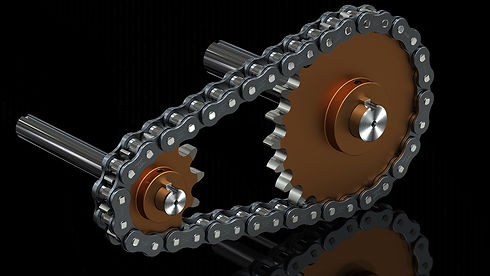
FUEL MODULES FLASHING AND KIT ECU’S
To get the best out of your bike there’s loads that you can do also with the electronics.
The Cheapest and the Easiest way is to fit a FUELING MODULE – allowing you to alter the injectors, Air/fuel ratio. Air–fuel ratio (AFR) is the mass ratio of air to a solid, liquid, or gaseous fuel present in a combustion process. The combustion may take place in a controlled manner such as in an internal combustion engine or industrial furnace, or may result in an explosion. The air-fuel ratio determines whether a mixture is combustible at all, how much energy is being released, and how much unwanted pollutants are produced in the reaction. Typically, a range of fuel to air ratios exists, outside of which ignition will not occur. These are known as the lower and upper explosive limits.
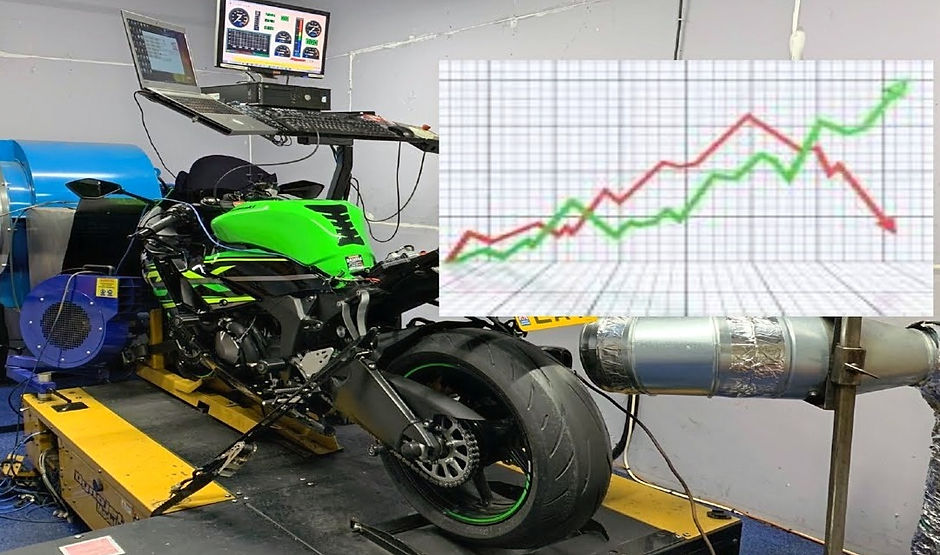_edited.jpg)
Go a bit deeper and you’ll need to get your ECU “Flashed” or get what’s called a “kit ECU”.
Most modern bikes stock ECU’s allow you to alter tons of stuff from the fueling, to the ignition timing, traction control, quickshifter settings…etc.,
However, you can’t just fire up your computer and go on about the tuning process, you need to first get your ECU flashed, which doesn’t require any extra wiring.
In terms of technologically its comparably affordable, but ALSO VERY RISKY if you are inexperienced. It takes only a few clicks at the wrong places, and you left a bike that won’t work accordingly. It Is highly advisable to leave it to the professional mechanics.
Most Fuel modules only controls the fueling and may only control the bottom/top injectors, so its required to have 2 modules to control both sets.
If your looking to map your bike and care about extra things like launch control, this is as hi-tech as you need to go [ But be prepared to lug around extra cables, as there’s often a good chunk of wiring included.
To really get the best out of your bike take it on a dyno and match the fuel map to your engine.
KIT ECU'S
At the polar opposite end are KIT ECU’s
These don’t require extra wiring and often come with a kit loom, used on track bikes to discard unwanted weight and wiring.
Kit ECU’s allow you to change plenty of parameters-
Electronic Steering Dampers
Rev Limiters
Auto Blippers
The temperature at which radiator fan starts
And even how much the bike “backs-in” by adjusting the amount of fuel trickled into the cylinders on the overrun.
Kit ECU’s are usually EASY TO ADJUST
From a plugged-in laptop and are preferred choice of race teams.
